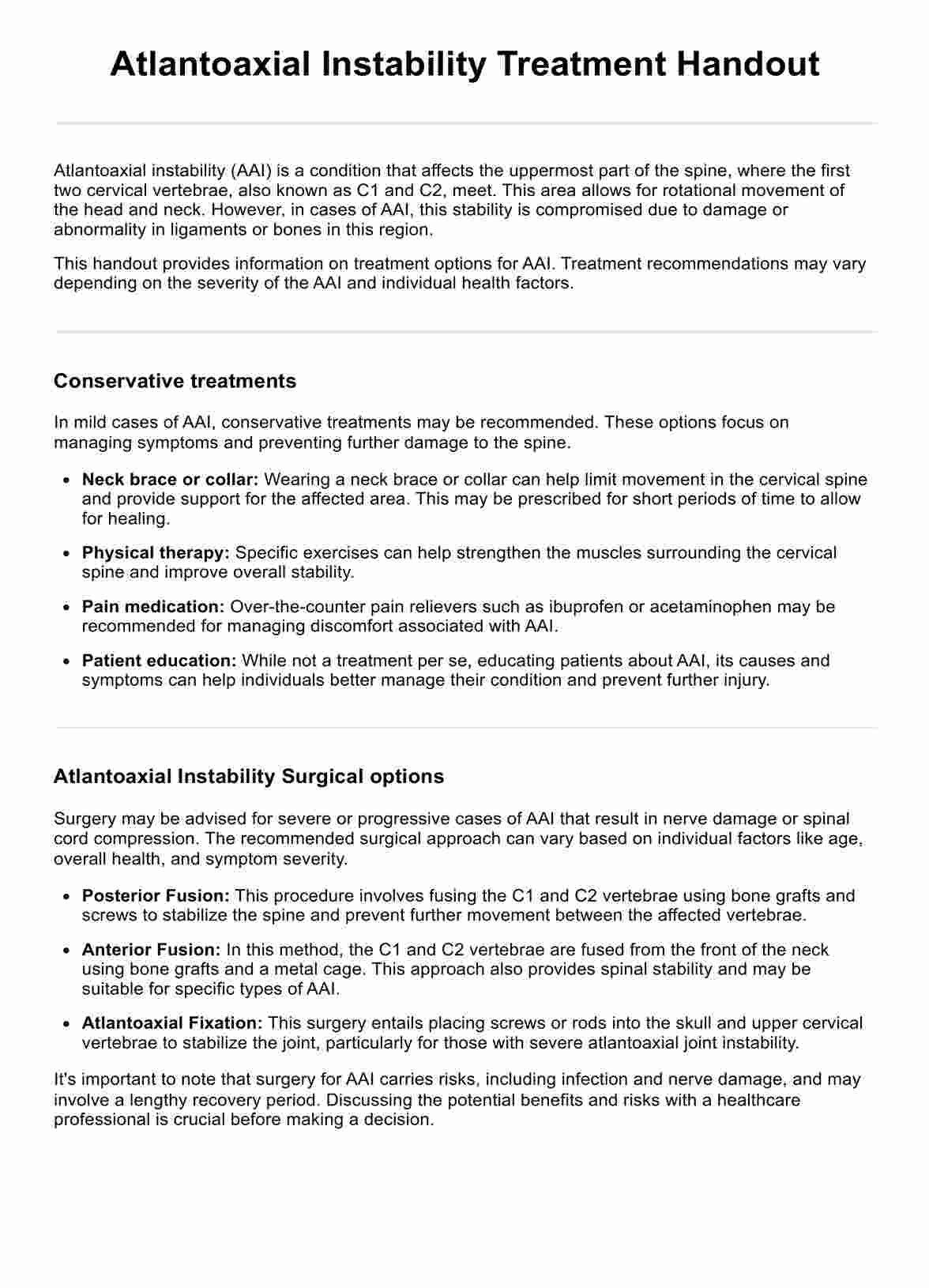Congenital conditions, trauma, degenerative disorders, and inflammatory diseases like rheumatoid arthritis most commonly cause atlantoaxial instability.

Atlantoaxial Instability Treatment Handout
Explore our comprehensive guide on Atlantoaxial Instability Treatment, offering expert advice for managing cervical spine issues effectively. Download now!
Use Template
Atlantoaxial Instability Treatment Handout Template
Commonly asked questions
Diagnosis typically involves a combination of clinical examination, imaging studies such as X-rays, CT scans, or MRIs, and sometimes dynamic fluoroscopy to assess the stability of the cervical spine.
Untreated AAI can lead to progressive neurological deficits, severe pain, and, in extreme cases, paralysis.
EHR and practice management software
Get started for free
*No credit card required
Free
$0/usd
Unlimited clients
Telehealth
1GB of storage
Client portal text
Automated billing and online payments











